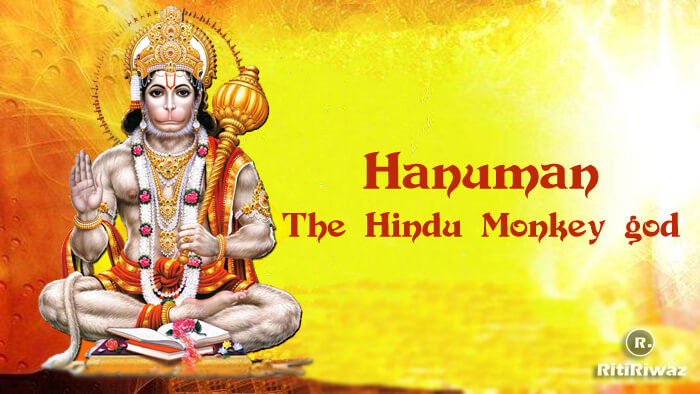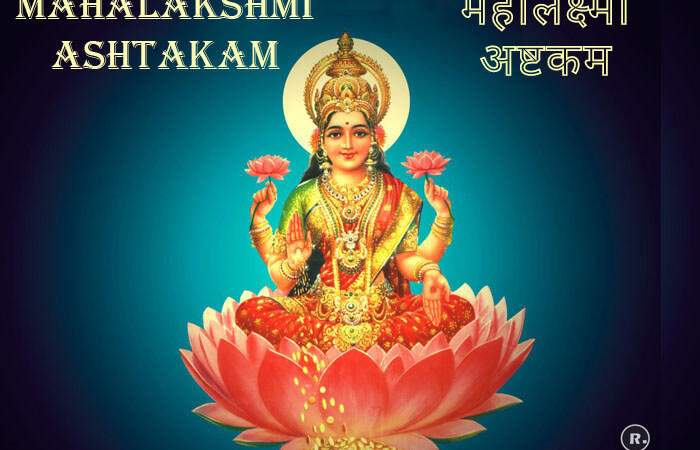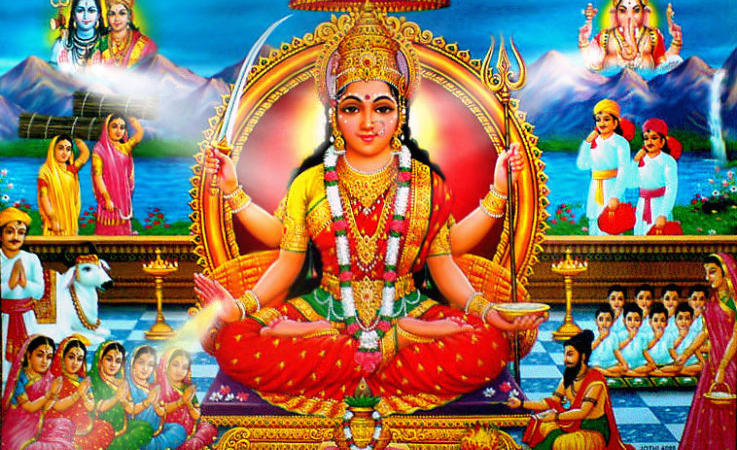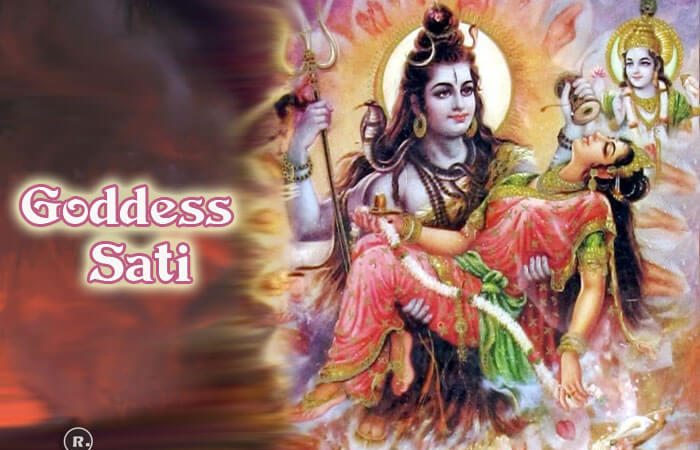Hanuman – The Hindu Monkey God

Hanuman is considered to be having a lot of Strength, Power, and Wisdom. Hanuman is one of the most worshiped God. People are seen devoting their Tuesday to the worship of Lord Hanuman. In India, you can see the grandest temples of Hanuman on every corner.
Lord Hanuman, the Monkey God and one of the most fascinating characters in the Ramayana, personifies the true superhero-philosopher. He is one of the greatest devotees of Lord Rama. Panchamukha Hanuman is considered to be the 11th embodiment of Lord Shiva. He was a mystic being that is half-human and half-animal.
The Auspicious One who, according to the sacred scriptures, was the first God to originate, as well as part of the powerful Trinity. He combines two of the most cherished traits in the Hindu bhakti-shakti worship traditions: “heroic, strong, assertive excellence” and “loving, emotional devotion to personal God“.
Lord Hanuman is known by many names as Anjaneya, Anjali Putra, Bajarangabali, Hanuman, Mahaveer, Maruti, Pavanputra, etc.
Meaning within the word Hanuman: Ha – stands for the affirmative attitude towards life i.e. being positive. Nu – here is taken from Nuksan i.e. harm one should not harm anybody. Ma – taken from Maan, pride. What more pride than getting the human form in this very birth. Na – stands for Namrata i.e. humility, being humble. Suggested Read: Sahasranamavali of God HanumanHanuman, the monkey god, is the son of Vayu or Marut, the wind god. Hanuman’s mother is Anjana. He is fast, the most agile, and oriented god. Hanuman was the chief of the armies of Sri Ramachandra and took a prominent part in the war against Ravana, the king of Lanka, in the Indian epic poem Ramayana. Hanuman helped restore Sri Sitadevi back to Sri Rama.
Hanuman, worshipped for his strength, valor, agility, is a man of great teaming. He is considered to be an avatar (incarnation) of Lord Shiva. Hanuman, a great devotee of Sri Rama, is the symbol of devotion and dedication. Hanuman carried Sri Rama and Lakshmana on his shoulder when they were in search of Sugreeva, the king of Vanarav in Kishkindha, and helped them to find Sita.
Prior to the war between Sri Rama and Ravana, Anjaneya visited Lanka, met Ravana, created havoc, and burnt down the city of Lanka (Lanka Dahan). During the war, when Lakshmana was injured seriously, Sushena, the surgeon/physician of the monkey army, despatched Maruti to bring herbal medicine, Jadi Buti, from the far-off Sanjeevini mountain in the Himalayas, before sunrise. Flying over the Himalayas and unable to identify the particular herb fast, Hanuman uprooted and carried the entire Sanjivini mountain in time to save the life of Lakshmana. Hanuman was blessed by Sri Rama with immortality (Chiranjeevi).
Symbolic Significance of Lord Hanuman

Lord Hanuman symbolically stands for pure devotion, complete surrender, and absence of ego or the lower self, evolution to divinity, and subtle bodies of the human.
1. His character tells us what we can do in our lives by becoming pure devotees of God, aligning ourselves with the forces of good, helping the weak, self-control, unconditional faith, and total surrender.
2. Hanuman’s monkey face represents the human mind. The human mind is like a monkey, it is fickle, it jumps from one thing to the other, never at peace, and it’s difficult to be brought under control. But when one becomes a devotee of the Supreme, like how Hanuman became a devotee of Rama, who is an incarnation of the Supreme Lord, one’s mind becomes steady in devotion and one develops superhuman qualities or abilities. Hanuman was able to cross the ocean to reach Lanka or lifting the Dronagiri Parvat.
3. As a prominent warrior of the Vanara race, he symbolically represents the lower self or the animal (Neanderthal) nature in man. Which when refined and transformed becomes stabilized in God and serves the divine cause in total surrender, just as it happened in case of Hanuman.
4. As the son of Vayu, he symbolically represents the subtle bodies (beyond physical), namely the breath body, the mental body, and the intelligence body. The breath body is responsible for the movement of life energy or prana in our bodies. It is especially strong in people who lead ethically clean and celibate lives, performing austerities, for which Anjaneya was particularly famous.
Suggested Read: Panchmukhi Hanuman Kavach Mantra
5. As a devotee, Hanuman represents the mental body, which is made up of the thought currents that float in our Chitta or consciousness. It is responsible for our imagination, astral travel, and dream experiences.
6. The Mace that Hanuman is adorned with is not a physical weapon, but is symbolic of one who is the embodiment of moral and spiritual values. It is carried in the right hand as a symbol of self-sovereignty, the authority of governance, and the power to rule.
7. The intelligence body is made up of buddhi or discretionary intelligence, which is considered one of the highest tattvas or principles of Nature.
8. Our buddhi is said to be a direct reflection of divine intelligence. It is responsible for our decision-making ability, rational thinking, and conscience.
Suggested Read: Hanuman Bajrang Baan
Hanuman appears with a Buddhist gloss in Tibetan (southwest China) and Khotanese (west China, central Asia, and northern Iran) versions of Ramayana. Lord Hanuman according to Jainism was a normal-looking human being (did not have a tail or face resembling a monkey as portrayed in Hinduism). He became a monk and attained Nirvana.
A divine monkey has been a part of the historic literature and culture of China and Japan, possibly influenced by the close cultural contact through Buddhist monks and pilgrimage to India over two millennia. Some scholars have identified Lord Hanuman as one potential inspiration for Sun Wukong, the Monkey King character in the Chinese epic adventure Journey to the West. Hanuman is a revered heroic figure in Khmer history in Cambodia and Thailand, also in Indonesia Hanuman is the central character in many of the historic dance and drama artworks.
Suggested Read: Hanuman Mantra
Hanuman was a bachelor and is worshipped in all the temples of India. Every temple of Sri Rama contains an icon of Hanuman. The worship of Sri Rama is complete only with the worship of Hanuman. Sant Tulsidas composed the 40 stanzas of Hanuman Chalisa in praise of Hanuman. Hanuman Jayanti is the birth anniversary of Lord Hanuman. One cannot understand Hindu Dharma unless one knows Hanuman.
On Tuesday and in some cases Saturday, many devotees keep fast in honor of Lord Hanuman and give a special offering to him. It is auspicious to recite Hanuman Chalisa and Hanuman’s mantra in front of the Hanuman idol.
Suggested Read: How To Worship Lord Hanuman






